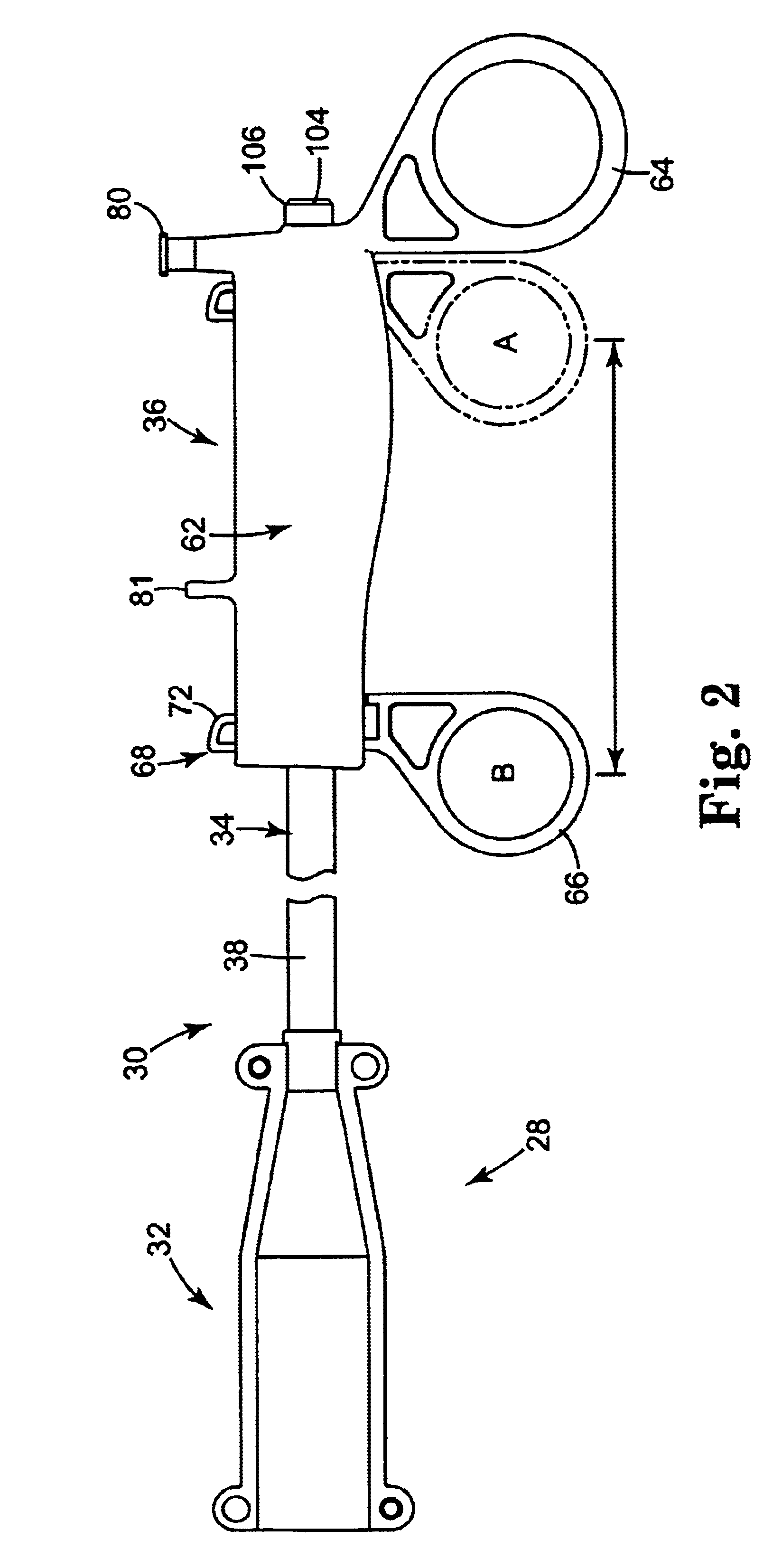Stent delivery device and method
- Summary
- Abstract
- Description
- Claims
- Application Information
AI Technical Summary
Benefits of technology
Problems solved by technology
Method used
Image
Examples
Embodiment Construction
[0037]The present invention relates to a method and apparatus for intraluminal delivery and deployment of a self-expanding prosthesis at a site within a body canal. In the particular embodiments shown in the drawings and herein described, the delivery systems include a delivery tool and a stent cartridge, wherein the stent is stored in the stent cartridge in an expanded state. The stent is transferred to the delivery tool on-site and immediately prior to the delivery and deployment procedure. Among the advantages of such a delivery system is that stress relaxation and / or creep of the stent is minimized. This is particularly important for polymeric stents which may exhibit substantial stress relaxation and creep if stored in a compressed state over a long period of time. Furthermore, the likelihood of contaminating the stent during the loading procedure is reduced because the stent is enclosed in the stent cartridge before and during the loading procedure. Still further, the loading ...
PUM
 Login to View More
Login to View More Abstract
Description
Claims
Application Information
 Login to View More
Login to View More - R&D
- Intellectual Property
- Life Sciences
- Materials
- Tech Scout
- Unparalleled Data Quality
- Higher Quality Content
- 60% Fewer Hallucinations
Browse by: Latest US Patents, China's latest patents, Technical Efficacy Thesaurus, Application Domain, Technology Topic, Popular Technical Reports.
© 2025 PatSnap. All rights reserved.Legal|Privacy policy|Modern Slavery Act Transparency Statement|Sitemap|About US| Contact US: help@patsnap.com



